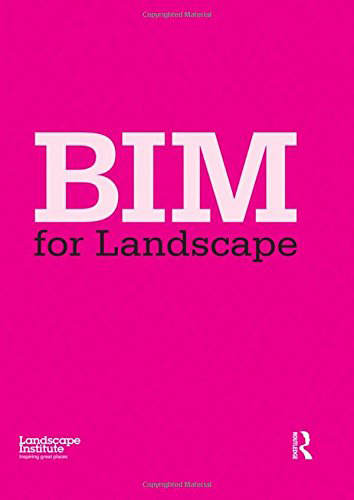The Landscape Institute has produced the first BIM book for the landscape profession. Claire Thirlwall, director of landscape architecture practice Thirlwall Associates, reviews the book, BIM for Landscape.
When this book was first mooted by the Landscape Institute I was unsure whether a physical book was the correct response to the fast-changing and digital focused topic of BIM. However, I’ve since found other BIM books extremely helpful and as a landscape architect keen to promote the value of BIM to our profession, I was excited to get my hands on this long-awaited book.
In keeping with the principles of BIM, the book has a methodical structure which makes it easy to navigate. The 21 chapters are divided into three sections – preparation, implementation and technology – which take the reader from the initial consideration of BIM and its relevance to their practice through to an explanation of evolving technologies such as smart cities and the Internet of Things.
After reading so many BIM documents that use language aimed at other built environment professionals, it is a relief to finally read guidance squarely aimed at landscape architects, using the terminology of our profession. What BIM for Landscape does well is to prove that BIM is just as relevant to landscape architecture as it is to other build environment professions.
I also think it will encourage landscape practices to review their business aims, and to identify inefficiencies within their working methods, even if they decide BIM is not yet for them.
The writing style is clear and concise, a welcome antidote to the style of some BIM documentation. Writing about standards is always a challenge, as breaking down a process into unambiguous steps can make it appear more complex than the reality, but the book overcomes this issue to provide usable guidance. The message is reassuring and should encourage practices to overcome any reluctance to implement BIM, a process that can appear daunting.
The book proves that BIM is relevant to our profession and that even though the guidance documentation uses terms we may not instantly recognise, it can be applied to our work. It isn’t evangelical about BIM but presents a positive view of its value for the landscape sector. The claims for the gains that can be made by moving into BIM are measured, which makes the argument all the more persuasive.
Read related article
Why landscape needs BIM (and a BIM book)
While the main factor to consider is the content, the design is important and I love the choice of vivid pink for the cover, countering the usual cliche of green for landscape.
My only real criticisms relate to the design and layout. Unlike the comparable book Guidelines for Landscape and Visual Impact Assessment the sections are not numbered, which makes it difficult to reference the book in documents or when mentioning sections to colleagues. There are no spaces between paragraphs – a small detail but it does make the longer blocks of text harder to read and navigate.
There is a full description of each document that the landscape architect might need to produce or contribute to. However, our contribution may only require a few paragraphs or lines in a spreadsheet so some example extracts may have helped reassure readers that the task may be quite straightforward.
My final criticism is that the format is hard to update. I hope that the Landscape Institute will consider producing an addenda to ensure that we are all working to the current standards.
Overall however, and given the expectations placed on this book, which is a world first, I think that it has succeeded in the aim of demystifying the BIM process for landscape architects. It explains our role, shows the relevance to our sector and the gains that can be made by updating our working practices.
In his preface to the book Noel Farrer, president of the Landscape Institute, suggests that the book will help other professionals understand the application of BIM to landscape works, but I think it will also help other design professionals dealing with external works understand the concept of BIM as it relates to them.
BIM for Landscape has reassured me that BIM is readily applicable to landscape architecture, and the publication of this book signals to the wider industry that we are serious as a profession about implementing BIM.
BIM for Landscape is available here.

Given the expectations placed on this book, I think that it has succeeded in the aim of demystifying the BIM process for landscape architects. It explains our role, shows the relevance to our sector and the gains that can be made by updating our working practices.– Claire Thirlwall











